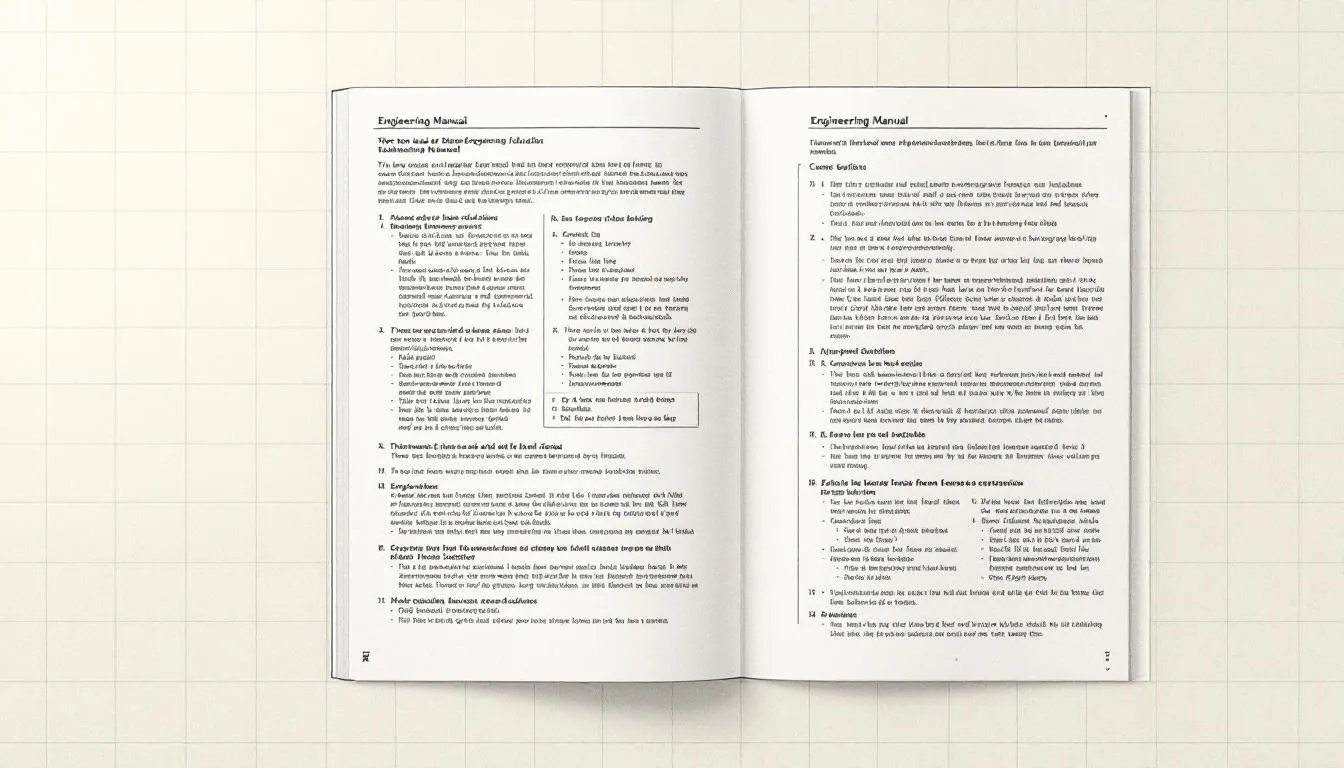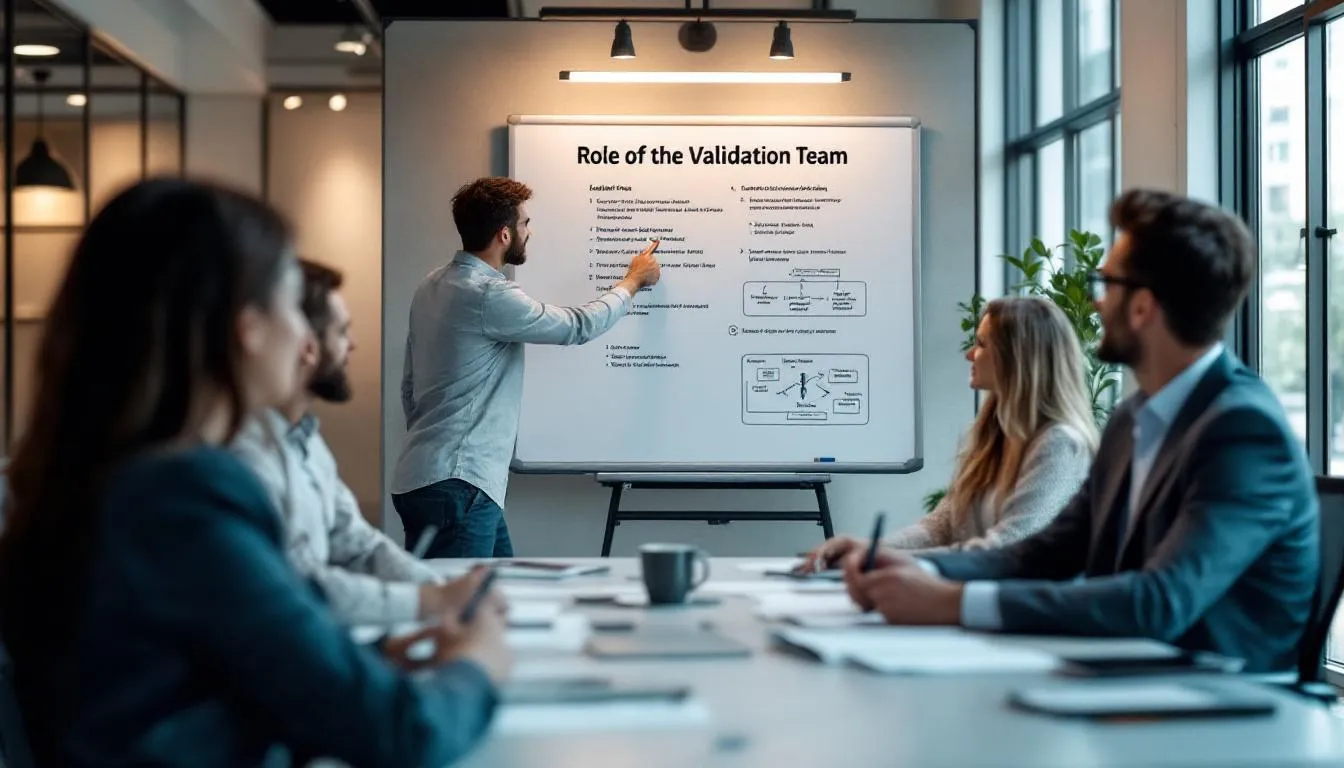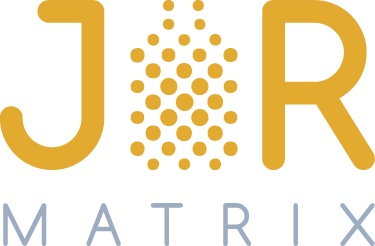How Regulators Evaluate Training Systems During GMP Inspections: A Comprehensive Guide
Validation Master Plan: Essential Steps for Effective Implementation
October 28, 2025

A Validation Master Plan (VMP), or Master Validation Plan (MVP), is essential for ensuring product quality and regulatory compliance in manufacturing. This comprehensive document outlines the entire validation process, detailing objectives, scope, and roles. In this article, you’ll learn the key components and steps for creating an effective VMP.
 A Validation Master Plan (VMP) is the cornerstone of any robust validation strategy. It is a comprehensive document that outlines the validation approach for a manufacturing process, aimed at ensuring product quality and consistency. The primary purpose of a VMP is to maintain uniformity in production quality, which is crucial for meeting both internal benchmarks and regulatory expectations.
The VMP delves into the minutiae of validation tasks, prioritizing them based on risk and scheduling activities to ensure systematic execution. This meticulous planning ensures that every aspect of the validation process is documented and justified, from the timing of activities to the procedures employed. Aligning all stakeholders within an organization reduces uncertainties about validation activities, fostering a unified approach towards achieving quality goals.
Moreover, a well-structured VMP is not just about internal alignment; it is also a critical tool for demonstrating compliance with regulatory requirements. Detailing the organization’s approach to validation, including the timing and justification for chosen methods, shows control over product reproducibility and process changes, thereby contributing significantly to compliance. The VMP demonstrates regulatory intent by showing regulatory bodies a pre-approved intention to comply with federal regulations like Current Good Manufacturing Practices (cGMP). In essence, the VMP is a vital document that ensures the seamless realization of product quality and compliance objectives.
A Validation Master Plan (VMP) is the cornerstone of any robust validation strategy. It is a comprehensive document that outlines the validation approach for a manufacturing process, aimed at ensuring product quality and consistency. The primary purpose of a VMP is to maintain uniformity in production quality, which is crucial for meeting both internal benchmarks and regulatory expectations.
The VMP delves into the minutiae of validation tasks, prioritizing them based on risk and scheduling activities to ensure systematic execution. This meticulous planning ensures that every aspect of the validation process is documented and justified, from the timing of activities to the procedures employed. Aligning all stakeholders within an organization reduces uncertainties about validation activities, fostering a unified approach towards achieving quality goals.
Moreover, a well-structured VMP is not just about internal alignment; it is also a critical tool for demonstrating compliance with regulatory requirements. Detailing the organization’s approach to validation, including the timing and justification for chosen methods, shows control over product reproducibility and process changes, thereby contributing significantly to compliance. The VMP demonstrates regulatory intent by showing regulatory bodies a pre-approved intention to comply with federal regulations like Current Good Manufacturing Practices (cGMP). In essence, the VMP is a vital document that ensures the seamless realization of product quality and compliance objectives.
 The planning process for process validation activities is a critical phase in the implementation of a Validation Master Plan (VMP). A well-crafted VMP scopes validation efforts, determining impacted products, processes, procedures, facilities, equipment, and utility systems. This comprehensive planning helps identify anticipated resource needs and provides input into project timelines, ensuring that all validation activities are completed on schedule.
Creating a validation schedule is the first step in the planning process. This schedule should include:
The planning process for process validation activities is a critical phase in the implementation of a Validation Master Plan (VMP). A well-crafted VMP scopes validation efforts, determining impacted products, processes, procedures, facilities, equipment, and utility systems. This comprehensive planning helps identify anticipated resource needs and provides input into project timelines, ensuring that all validation activities are completed on schedule.
Creating a validation schedule is the first step in the planning process. This schedule should include:
 Documentation and protocols are critical components of a Validation Master Plan (VMP). Key elements include:
Documentation and protocols are critical components of a Validation Master Plan (VMP). Key elements include:
 Change control and deviation management are essential components of a robust validation program. Change control ensures that any alterations affecting products are systematically managed to maintain quality and compliance. This process involves documenting and managing changes that impact product quality, ensuring that all changes are justified and properly implemented.
Deviation management involves documenting all deviations promptly to facilitate effective management and resolution. Investigating deviations helps identify root causes and assess their impact on compliance and product quality.
Effectively managing changes and deviations ensures that all validation activities are conducted systematically and comply with regulatory requirements.
Change control and deviation management are essential components of a robust validation program. Change control ensures that any alterations affecting products are systematically managed to maintain quality and compliance. This process involves documenting and managing changes that impact product quality, ensuring that all changes are justified and properly implemented.
Deviation management involves documenting all deviations promptly to facilitate effective management and resolution. Investigating deviations helps identify root causes and assess their impact on compliance and product quality.
Effectively managing changes and deviations ensures that all validation activities are conducted systematically and comply with regulatory requirements.
 The development of a Validation Master Plan is a collaborative effort involving various departments to ensure effective implementation. Successful execution of a VMP requires collaboration among various departments within the organization, including the quality assurance team, production manager, and regulatory department.
Clearly defined roles within the validation process enhance collaboration and accountability among team members. Roles typically involved in reviewing validation protocols and reports include:
The development of a Validation Master Plan is a collaborative effort involving various departments to ensure effective implementation. Successful execution of a VMP requires collaboration among various departments within the organization, including the quality assurance team, production manager, and regulatory department.
Clearly defined roles within the validation process enhance collaboration and accountability among team members. Roles typically involved in reviewing validation protocols and reports include:
Key Takeaways
- A Validation Master Plan (VMP) is essential for ensuring consistent product quality and regulatory compliance by systematically outlining validation tasks and stakeholder responsibilities.
- Key components of a VMP include defining validation objectives, establishing validation scope, and developing a comprehensive validation strategy to effectively manage validation activities.
- Implementing proper change control and deviation management processes within the VMP is critical for documenting and addressing changes or deviations that may impact product quality and compliance.
Understanding the Validation Master Plan (VMP)
 A Validation Master Plan (VMP) is the cornerstone of any robust validation strategy. It is a comprehensive document that outlines the validation approach for a manufacturing process, aimed at ensuring product quality and consistency. The primary purpose of a VMP is to maintain uniformity in production quality, which is crucial for meeting both internal benchmarks and regulatory expectations.
The VMP delves into the minutiae of validation tasks, prioritizing them based on risk and scheduling activities to ensure systematic execution. This meticulous planning ensures that every aspect of the validation process is documented and justified, from the timing of activities to the procedures employed. Aligning all stakeholders within an organization reduces uncertainties about validation activities, fostering a unified approach towards achieving quality goals.
Moreover, a well-structured VMP is not just about internal alignment; it is also a critical tool for demonstrating compliance with regulatory requirements. Detailing the organization’s approach to validation, including the timing and justification for chosen methods, shows control over product reproducibility and process changes, thereby contributing significantly to compliance. The VMP demonstrates regulatory intent by showing regulatory bodies a pre-approved intention to comply with federal regulations like Current Good Manufacturing Practices (cGMP). In essence, the VMP is a vital document that ensures the seamless realization of product quality and compliance objectives.
A Validation Master Plan (VMP) is the cornerstone of any robust validation strategy. It is a comprehensive document that outlines the validation approach for a manufacturing process, aimed at ensuring product quality and consistency. The primary purpose of a VMP is to maintain uniformity in production quality, which is crucial for meeting both internal benchmarks and regulatory expectations.
The VMP delves into the minutiae of validation tasks, prioritizing them based on risk and scheduling activities to ensure systematic execution. This meticulous planning ensures that every aspect of the validation process is documented and justified, from the timing of activities to the procedures employed. Aligning all stakeholders within an organization reduces uncertainties about validation activities, fostering a unified approach towards achieving quality goals.
Moreover, a well-structured VMP is not just about internal alignment; it is also a critical tool for demonstrating compliance with regulatory requirements. Detailing the organization’s approach to validation, including the timing and justification for chosen methods, shows control over product reproducibility and process changes, thereby contributing significantly to compliance. The VMP demonstrates regulatory intent by showing regulatory bodies a pre-approved intention to comply with federal regulations like Current Good Manufacturing Practices (cGMP). In essence, the VMP is a vital document that ensures the seamless realization of product quality and compliance objectives.
Key Components of a Validation Master Plan
A Validation Master Plan (VMP) is a structured guide for validating processes, systems, and equipment within regulatory frameworks. It serves as the backbone of a validation program, detailing the organization’s overall approach to its validation activities and why that approach is appropriate. Essential elements of a VMP include the scope of validation, roles and responsibilities, and management of third-party validation activities. Defining validation objectives is the first step in crafting a robust VMP. It outlines what needs to be accomplished through the validation process and sets clear goals for initial validation or revalidation. Next, establishing the validation scope involves:- Identifying all utilities, processes, systems, and procedures that require validation.
- Ensuring that all critical areas are covered.
- Often involving a risk assessment approach to determine the extent of validation required.
Defining Validation Objectives
Defining validation objectives is akin to setting the destination before embarking on a journey. These objectives outline what needs to be achieved through the validation process, whether it is for initial validation or revalidation of processes. The primary goal of initial validation is to establish that the process, system, or equipment can operate within pre-defined parameters to produce a quality product consistently. Revalidation, on the other hand, ensures that the process remains in a state of control over time. The potential impact of production processes on product quality is a critical factor in defining validation objectives. This assessment helps in justifying the scope of process validation protocols, ensuring that all critical aspects are covered. By clearly defining these objectives, organizations can align their validation activities with their quality assurance goals, providing a clear roadmap for achieving consistent product quality.Establishing the Validation Scope
Establishing the validation scope is a fundamental step in the VMP, as it defines the boundaries within which validation activities will be conducted. The scope should include all utilities, processes, systems, and procedures that require validation to ensure product quality and compliance. Key elements that should be identified for validation include:- Facilities
- Equipment
- Systems
- Processes
- The specific product
- Intended purpose
- Associated facilities
- Systems
- Equipment
- Processes
Developing a Validation Strategy
Developing a validation strategy is the third key component of a VMP. A comprehensive validation strategy outlines the specific methods of validation to be employed, which may involve prospective, concurrent, or retrospective approaches. This strategy should also include applicable references to QMS procedures and work instructions, ensuring that all validation activities are conducted in accordance with established quality standards. Roles and responsibilities must be clearly delegated at both personal and institutional levels within the validation strategy:- If testing is outsourced, the strategy should specify the institution responsible for testing.
- The strategy should identify the responsible person for testing.
- Ensure that all parties involved are aware of their roles and responsibilities.
Planning Process for Validation Activities
 The planning process for process validation activities is a critical phase in the implementation of a Validation Master Plan (VMP). A well-crafted VMP scopes validation efforts, determining impacted products, processes, procedures, facilities, equipment, and utility systems. This comprehensive planning helps identify anticipated resource needs and provides input into project timelines, ensuring that all validation activities are completed on schedule.
Creating a validation schedule is the first step in the planning process. This schedule should include:
The planning process for process validation activities is a critical phase in the implementation of a Validation Master Plan (VMP). A well-crafted VMP scopes validation efforts, determining impacted products, processes, procedures, facilities, equipment, and utility systems. This comprehensive planning helps identify anticipated resource needs and provides input into project timelines, ensuring that all validation activities are completed on schedule.
Creating a validation schedule is the first step in the planning process. This schedule should include:
- All key validation projects
- The resources assigned to each project
- Responsibilities for each step
- The time scale for each project.
Creating a Validation Schedule
Creating a validation schedule is a crucial part of the planning process. This schedule should include all key validation projects, the resources assigned to each project, and the responsibilities for each step. A comprehensive validation schedule ensures that all necessary validation activities are planned and executed in a timely manner, avoiding delays and ensuring compliance with regulatory expectations. Factoring in realistic expectations when developing timelines for validation activities is crucial. This involves considering potential risks and allowing for unexpected delays that may arise during the validation process. A detailed and realistic validation schedule ensures that all validation activities are completed on time and within budget.Conducting Risk Assessment
Conducting a risk assessment is an essential step in the planning process for validation activities. This assessment helps identify potential operational and product quality risks that may arise during the validation process. Using a risk-based approach helps determine which processes require validation and the sequence of validation efforts. A risk-based approach helps prioritize validation efforts based on the potential risk impact on product quality and compliance. Changes that may impact product quality require a thorough risk assessment to evaluate potential consequences and ensure that appropriate risk management strategies are in place. Conducting a comprehensive risk assessment ensures that all critical validation activities are prioritized and executed effectively.Allocating Resources and Responsibilities
Allocating resources and responsibilities is a crucial part of the planning process for validation activities. A Validation Master Plan (VMP) serves as a strategic guide for ensuring that necessary resources are allocated for validation tasks. This involves defining responsibilities for each validation activity to ensure effective execution and accountability. Factors such as realism and allowance for unexpected delays should be considered when determining the duration of each validation activity. Identifying risks and integrating mitigation strategies is critical to prevent issues in the validation process. Allocating resources and responsibilities effectively ensures the successful completion of all validation activities.Documentation and Protocols in VMP
 Documentation and protocols are critical components of a Validation Master Plan (VMP). Key elements include:
Documentation and protocols are critical components of a Validation Master Plan (VMP). Key elements include:
- A validation protocol, which defines the procedures and criteria for conducting a specific validation project.
- Validation deliverables, including reports and documents, which provide evidence of successful validation activities.
- A report confirming completion of all validation activities, produced as a result of each validation plan.
- A validation summary report is recommended to confirm that all validation activities have been satisfactorily completed.
Validation Protocols
Validation protocols are the backbone of any validation project. They specify how a qualification and validation project will be conducted, ensuring that all activities are performed in a controlled and documented manner. The types of validation involved in a Validation Master Plan include:- Design Qualification (DQ)
- Installation Qualification (IQ)
- Operational Qualification (OQ)
- Performance Qualification (PQ)
- Process Validation (PV)
- Computer System Validation (CSV)
- Cleaning Validation (CV).
Supporting Documents
Supporting documents play a crucial role in the validation process. These documents include development reports, Standard Operating Procedures (SOPs), and specifications that provide detailed guidance and support for validation activities. Supporting documents ensure that all aspects of the validation process are thoroughly documented and that any deviations or changes are properly managed and addressed. Risk assessments are also an integral part of supporting documents, providing detailed evaluations of potential risks associated with validation activities. Maintaining comprehensive supporting documents ensures that all validation activities are conducted systematically and in compliance with regulatory requirements.Document Approval Process
The document approval process is a critical part of the validation process, ensuring that all validation documents are reviewed and approved by the relevant authorised personnel. The following roles are required to approve validation documents, ensuring technical correctness and compliance with regulations:- Production manager
- Validation team lead
- Regulatory department
- Quality department
- Management
Change Control and Deviation Management
 Change control and deviation management are essential components of a robust validation program. Change control ensures that any alterations affecting products are systematically managed to maintain quality and compliance. This process involves documenting and managing changes that impact product quality, ensuring that all changes are justified and properly implemented.
Deviation management involves documenting all deviations promptly to facilitate effective management and resolution. Investigating deviations helps identify root causes and assess their impact on compliance and product quality.
Effectively managing changes and deviations ensures that all validation activities are conducted systematically and comply with regulatory requirements.
Change control and deviation management are essential components of a robust validation program. Change control ensures that any alterations affecting products are systematically managed to maintain quality and compliance. This process involves documenting and managing changes that impact product quality, ensuring that all changes are justified and properly implemented.
Deviation management involves documenting all deviations promptly to facilitate effective management and resolution. Investigating deviations helps identify root causes and assess their impact on compliance and product quality.
Effectively managing changes and deviations ensures that all validation activities are conducted systematically and comply with regulatory requirements.
Change Control Procedures
Change control procedures must be clearly defined in the Validation Master Plan to manage the program effectively. The purpose of change control is to formally manage and document any changes that impact product quality. Key aspects include:- Documenting any change from the planned validation process
- Including the required deliverables for the change
- Providing the reason and justification for the proposed change
Managing Deviations
Managing deviations is a crucial part of the validation process. It involves:- Documenting all deviations promptly to facilitate effective management and resolution.
- Investigating deviations to identify root causes.
- Assessing the impact of deviations on compliance and product quality.
Ensuring Compliance with Regulatory Requirements
Ensuring compliance with regulatory requirements is a fundamental aspect of a Validation Master Plan. The VMP serves as a roadmap, outlining validation activities crucial for compliance and quality assurance. The quality assurance or validation teams are primarily responsible for developing the VMP based on their understanding of regulatory requirements. The validation master plan should reference relevant policy documents and SOPs, ensuring that all validation activities are conducted in compliance with regulatory guidelines. Management’s commitment and approval post-risk assessment is crucial for the validation plan. Ensuring compliance with regulatory requirements helps maintain consistent production quality and meet regulatory expectations.The Role of the Validation Team
 The development of a Validation Master Plan is a collaborative effort involving various departments to ensure effective implementation. Successful execution of a VMP requires collaboration among various departments within the organization, including the quality assurance team, production manager, and regulatory department.
Clearly defined roles within the validation process enhance collaboration and accountability among team members. Roles typically involved in reviewing validation protocols and reports include:
The development of a Validation Master Plan is a collaborative effort involving various departments to ensure effective implementation. Successful execution of a VMP requires collaboration among various departments within the organization, including the quality assurance team, production manager, and regulatory department.
Clearly defined roles within the validation process enhance collaboration and accountability among team members. Roles typically involved in reviewing validation protocols and reports include:
- Head of validation
- Head of quality assurance
- Validation team members
- Validation team leader
Benefits of External Validation Support
For life science companies, ensuring effective validation across all stages of a product lifecycle can be a daunting task. External validation support can provide valuable expertise and resources, helping organizations achieve effective validation across all stages of a product lifecycle. This support can be particularly beneficial in managing complex validation projects and ensuring compliance with regulatory requirements. The VMP can help introduce new staff and team members to a project or process, providing them with a clear understanding of the validation framework and objectives. External validation support can also help organizations navigate the complexities of the validation process, providing guidance on best practices and helping to identify potential risks and mitigation strategies. Leveraging external validation support ensures that all validation activities and computer validation are conducted systematically and comply with regulatory requirements.Summary
In summary, a well-implemented Validation Master Plan is crucial for ensuring consistent product quality and compliance with regulatory requirements. The VMP serves as a comprehensive blueprint, detailing the validation strategy, planning process, documentation protocols, and change control procedures necessary for effective validation. By defining validation objectives, establishing the validation scope, and developing a validation strategy, organizations can ensure that all validation activities are conducted systematically and in compliance with regulatory requirements. A VMP is commonly used for new product introductions as well as ongoing validation projects. By fostering a collaborative approach and leveraging external validation support, organizations can navigate the complexities of the validation process and achieve effective validation across all stages of a product lifecycle. A well-implemented VMP not only ensures product quality and compliance but also provides a roadmap for continuous improvement and operational excellence. Let’s embrace the journey towards mastering the VMP and achieving unparalleled consistency in product quality.Frequently Asked Questions
How to write a superb Validation Master Plan?
To write a superb Validation Master Plan, you must clearly define validation objectives, scope, strategy, roles and responsibilities, timelines, conduct a risk assessment, and outline validation deliverables. This structured approach ensures comprehensive and efficient validation processes.What is the primary purpose of a Validation Master Plan?
The primary purpose of a Validation Master Plan is to ensure consistent production quality and compliance with regulatory expectations. This framework safeguards product integrity throughout the manufacturing process.What are the key components of a Validation Master Plan?
The key components of a Validation Master Plan include defining validation objectives, establishing the validation scope, and developing a validation strategy. These elements ensure a comprehensive approach to maintaining quality and compliance throughout the validation process.Why is a risk-based approach important in validation?
A risk-based approach in validation is crucial as it enables the prioritization of validation efforts, focusing resources on areas that pose the greatest risk to product quality and regulatory compliance. This ensures effective risk management and enhances the overall reliability of the validation process.How does change control contribute to validation?
Change control significantly enhances validation by ensuring that all changes impacting product quality are systematically managed and documented, thereby maintaining compliance and integrity throughout the validation process.Are you ready to take your knowledge to the next level?
Sign up to receive email updates on new Content, Special promotions and more.
Our Top Posts
Agile Thinking in Pharmaceutical Industry: Transforming Drug Development for the Digital Age
Data Integrity: Complete Guide to Protecting Your Organization’s Data Assets
Efficient Documentation in Pharma: Navigating Compliance and Streamlining Processes
Good Clinical Practice: Complete Guide to GCP Standards and Compliance
Validation Master Plan: Essential Steps for Effective Implementation
What is Good Manufacturing Practice and Why it matters in Pharmaceutical Industry
Utilising the 5 Whys Technique in Pharmaceutical Manufacturing: A Comprehensive Guide
